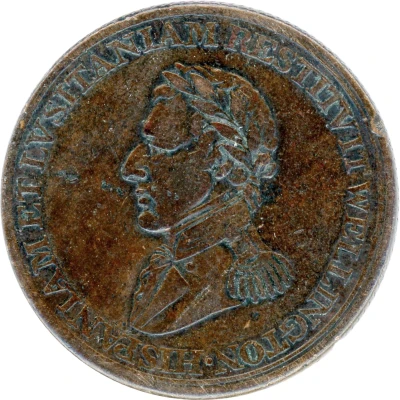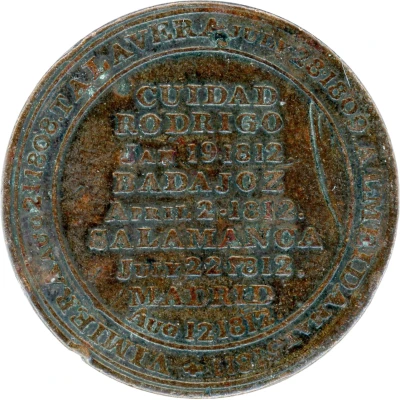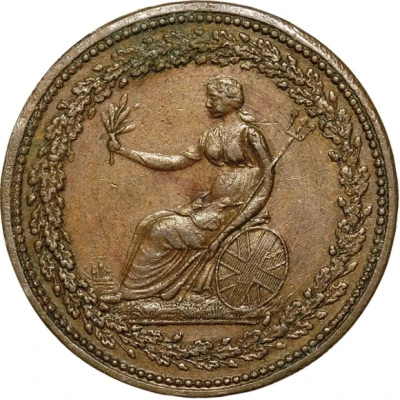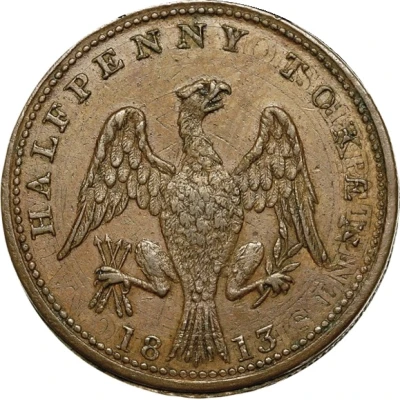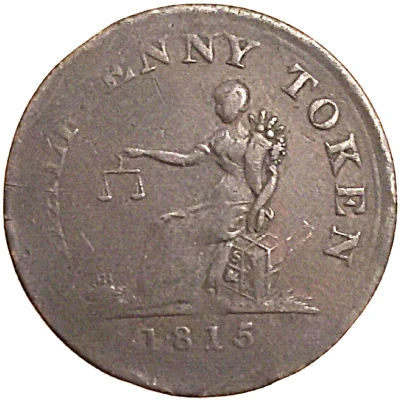
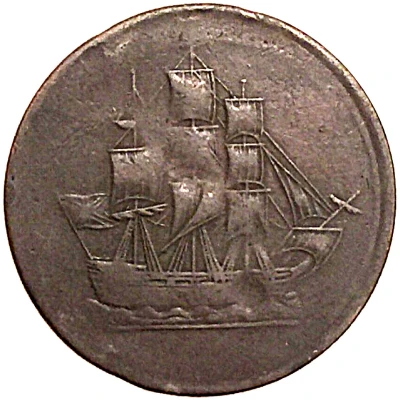

© Mark240590
½ Penny Bale marked S.J. and Co
| Copper | 5.8 g | 28.6 mm |
| Issuer | Lower Canada (Canadian provinces) |
|---|---|
| Type | Token |
| Years | 1812-1815 (1812-1816) |
| Value | ½ Penny (1⁄480) |
| Currency | Pound |
| Composition | Copper |
| Weight | 5.8 g |
| Diameter | 28.6 mm |
| Shape | Round |
| Technique | Milled |
| Orientation | Coin alignment ↑↓ |
| Demonetized | Yes |
| Updated | 2024-10-04 |
| Numista | N#84902 |
|---|---|
| Rarity index | 76% |
Reverse
Ship sailing right.
Edge
Reeded and plain.
Comment
All varieties appear in both Coin and Medal alignment.Weight: 5.3 - 6.2 g
Diameter: 28.3 - 28.7 mm
LC-56A1 Short pennant on foremast, copper
LC-56A2 Short pennant on foremast, brass
LC-56A3 No pennant on foremast, copper
LC-56A4 No pennant on foremast, brass
Weight: 5.3 - 6.4g
Diameter: 28.3 - 28.9mm
LC-56B1 Copper.
LC-56B2 Brass.
Weight: 5.1 - 5.2g
Diameter: 27.7 - 28.0mm
Breton # 1005
LC-56C1 Copper.
LC-56C2 Brass.
The "Seated Justice" tokens have been found in Lower Canadian hoards. Derived from a token struck by Halliday and struck by Sir Edward Thomason for Shaw, Jobson & Co. of Roscoe mills in Sheffield, England.
Interesting fact
One interesting fact about the Token ½ Penny (Bale marked S.J. and Co) 1812-1815 (1812-1816) from Lower Canada (Canadian provinces) made of Copper weighing 5.8 g is that it was used as a substitute for the official British halfpenny coin, which was in short supply in the early 19th century. The coin was issued by private companies, such as S.J. and Co, and was accepted as legal tender in the Canadian provinces. This coin is a rare example of a privately issued currency that was used as an alternative to official government-issued currency.
